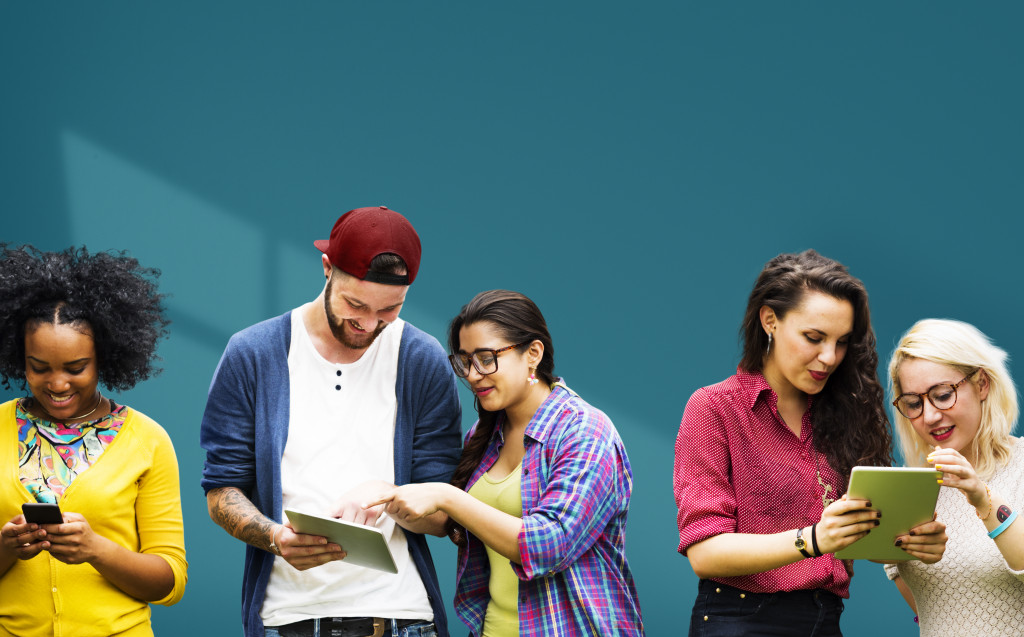The two most significant factors in the success of the workplace now are inclusivity and diversity. Companies that do not prioritize and give enough focus on making the workplace inclusive and diverse will unlikely succeed in modern times. A report in 2018 showed that more culturally diverse companies were 43% more likely to make huge profits. And if you want to attract Millennials and Generation Z to your business, you have to show them you understand these two things that matter to them the most.
Connectivity, Frequencies, and Power Handling
The internet is the most powerful tool for people with physical disabilities to join an organization. Those who cannot commute to the office can work remotely from home. It’s the same technology that allows businesses to hire workers from all over the world. It allows them to expand their reach and tap a wider talent pool. Thanks to the ability of the internet to link and connect everybody, companies can hire workers with physical incapacities. As long as they know how to use a computer and the internet, they can be as competitive as a fully able employee.
But if there’s one problem that they face when it comes to using digital connectivity, it is the frequency and power-handling issues of most networks. This is why it’s vital for companies to also invest in connectivity infrastructures. These infrastructures should support high-frequency and high-power coexistence BAW RF filters. This component has better thermal properties that will ensure continuous high-quality connectivity between computers and networks.
Wearable Devices
These devices are designed to allow people with disabilities to perform everyday tasks. Even those without physical disabilities can use these devices for convenience. Some of the most popular wearable devices are smartwatches, fitness trackers, smart glasses, and virtual reality headsets. Some wheelchairs can detect oncoming traffic and avoid people as they navigate the “passenger” through the streets. This is why disabled people have been able to work and live independently in recent years.
Perhaps the most critical technology developed for inclusivity in the workplace are voice-activated devices. Anyone who cannot physically control their wheelchairs, smartphones, or computers can use their voice to command these devices to perform certain tasks. This helps disabled people work, communicate, and take care of themselves.

In-app Translation
Being inclusive and diverse is not just about hiring people with disabilities. It’s also hiring people from different cultures and backgrounds. The language barrier is the most common reason why companies cannot hire from outside the country. They cannot even hire immigrants who have the skills they need. Thankfully, in-app translations are now more precise. These workplace tools allow companies to embrace people from all over the world, including those who are not too fluent in English.
Apps and software can now translate whole blocks of texts. This means that the workers themselves can collaborate on projects as long as there’s a translator to guide them. If you want your company to be more diverse, opening your arms to non-native English speakers is one of the most critical steps.
Project Management Tools
Today, companies are using project management tools to collaborate remotely. Workers who are in a work-from-home setup can still manage to contribute to company projects. At the same time, the whole team can successfully finish and launch campaigns without needing to meet face-to-face. This is important not only to ensure inclusivity and diversity but also to eliminate the need for face-to-face interactions in the office.
Many companies that survived during the pandemic are those that maximized project management tools in the past year and a half. They empowered collaboration among their staff. They also made critical decisions on managing their companies despite the crisis they faced. And even amid the pandemic, companies outsourced work to people with different skills and backgrounds. That’s all made possible by technology.
Virtual Reality
This technology will give disabled people a chance to “experience” their work. Using virtual reality glasses, they can, for example, map accessible routes before they go out of their houses. This will allow them to be physically present at work. They can also test prototypes using virtual and augmented reality. For people with physical disabilities, this means that they are no longer confined in their houses.
Technology has gone a long way to making it possible for people from different cultures and backgrounds with varied abilities and disabilities to join industries. For companies, technology is an opportunity to hire better-skilled employees. It empowers them to cast a wide net over the pool of talent that is available for hire.
